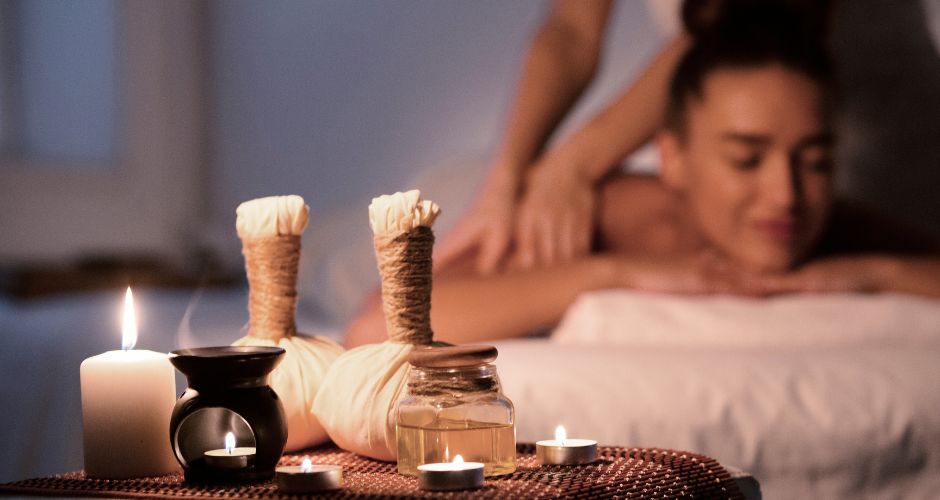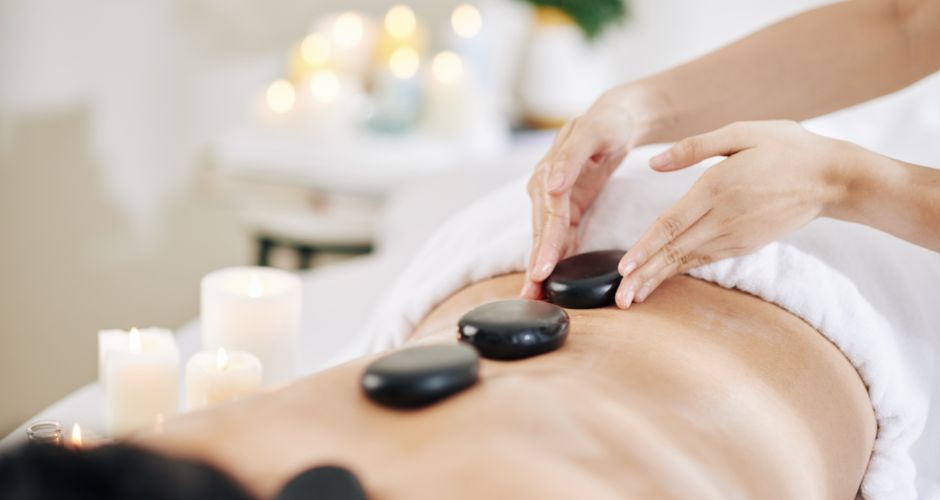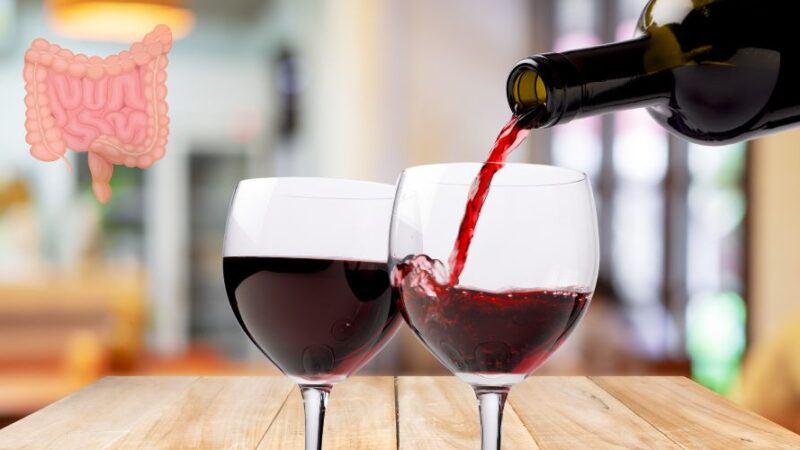Different Types of Massage & Their Benefit

Massage therapy has been practiced for centuries, offering a multitude of physical and mental health benefits. In this blog, we delve into the different types of massages and their unique advantages. Whether you’re seeking relaxation, pain relief, or improved flexibility, there’s a massage technique tailored to suit your needs.
Swedish Massage
Swedish massage, a timeless and widely practiced form of therapeutic massage, is celebrated for its ability to induce relaxation and promote overall well-being. Rooted in Western practices, this massage technique has become a staple in spas and wellness centers around the world. Here’s a closer look at the characteristics and benefits of Swedish massage:

Techniques Used
- Effleurage: Long, gliding strokes characterize effleurage, promoting relaxation and improving blood circulation.
- Petrissage: This technique involves kneading, squeezing, and rolling motions, targeting deeper muscle layers to release tension and enhance flexibility.
- Friction: Circular movements with applied pressure aim to increase blood flow and break down muscle knots, providing relief from chronic tension.
- Tapotement: Rhythmic tapping, pounding, and drumming movements invigorate muscles and stimulate the nervous system.
- Vibration: Fine, rapid shaking or trembling motions, often applied with fingertips or palms, help release muscle tension and promote relaxation.
Benefits of Swedish Massage
- Stress Reduction: The primary goal of Swedish massage is to induce relaxation, making it an effective method for reducing stress and anxiety levels.
- Improved Circulation: Effleurage and other gentle strokes enhance blood flow, facilitating the delivery of oxygen and nutrients to cells throughout the body.
- Pain Relief: The kneading and friction techniques employed in Swedish massage can alleviate muscle pain, making it beneficial for those dealing with chronic discomfort.
- Enhanced Flexibility: Petrissage and stretching motions help improve joint flexibility and reduce stiffness, contributing to enhanced overall mobility.
- Toxin Elimination: The stimulation of blood flow aids in the removal of metabolic waste products from muscles, promoting detoxification.
- Better Sleep Quality: The relaxation induced by Swedish massage can contribute to improved sleep patterns and overall sleep quality.
Deep Tissue Massage
Deep tissue massage is a therapeutic technique that goes beyond the surface to address chronic muscle tension and pain. Renowned for its ability to release knots and tightness in the body’s deeper layers, this massage modality is particularly beneficial for those seeking targeted relief. Let’s explore the characteristics, techniques, and benefits of deep tissue massage:

Characteristics and Techniques
- Focused Pressure: Unlike Swedish massage, which employs lighter strokes, deep tissue massage involves the application of firm and sustained pressure to reach the underlying muscle layers.
- Slow Strokes: Therapists use slow, deliberate strokes to target specific areas of tension. This deliberate pace allows for a deeper focus on problematic muscle groups.
- Friction: Friction techniques involve applying pressure across the grain of muscles, helping to break down adhesions and release tension in specific muscle fibers.
- Stripping: This technique involves using the therapist’s thumbs, knuckles, or elbows to apply deep, gliding pressure along the length of muscles to release tightness.
- Trigger Point Therapy: Therapists may use finger pressure to identify and release trigger points—small knots that can cause referred pain in other areas of the body.
Benefits of Deep Tissue Massage
- Chronic Pain Relief: Deep tissue massage is highly effective in addressing chronic pain conditions, such as lower back pain, sciatica, and neck and shoulder tension.
- Improved Posture: By targeting deeper layers of muscles and connective tissue, this massage modality can contribute to improved posture by releasing tension that may be pulling the body out of alignment.
- Increased Range of Motion: Deep tissue massage helps break up adhesions and scar tissue, allowing for better flexibility and an increased range of motion in joints.
- Injury Rehabilitation: It’s commonly used as part of rehabilitation after injuries, aiding in the healing process by promoting blood flow and reducing inflammation.
- Stress Reduction: While deep tissue massage is known for its intensity, it can also induce a profound sense of relaxation, helping to alleviate stress and tension.
Sports Massage
Sports massage is a specialized form of massage therapy designed to cater to the unique needs of athletes and active individuals. Beyond relaxation, this modality focuses on preventing and treating sports-related injuries, improving flexibility, and optimizing overall athletic performance. Let’s explore the characteristics, techniques, and benefits of sports massage:

Characteristics and Techniques
- Pre-Event Massage: Administered before an athletic event, pre-event sports massage aims to prepare the body for intense physical activity. It involves quick, invigorating strokes to stimulate circulation and increase flexibility.
- Post-Event Massage: After strenuous physical activity, post-event sports massage focuses on reducing muscle soreness and aiding in the recovery process. It typically involves slower, more relaxing strokes to promote healing.
- Maintenance Massage: Regular sports massage sessions can serve as part of an athlete’s maintenance routine, addressing muscle imbalances, preventing injuries, and optimizing overall performance.
- Deep Tissue Techniques: Sports massage often incorporates deep tissue techniques to target specific muscle groups, release tension, and address adhesions or knots.
- Stretching: Therapists may incorporate assisted stretching during the massage to enhance flexibility and range of motion.
Benefits of Sports Massage
- Injury Prevention: Regular sports massage can identify and address potential issues before they escalate into injuries, helping athletes maintain optimal performance.
- Improved Circulation: Enhanced blood flow from sports massage promotes quicker nutrient delivery to muscles and accelerates the removal of metabolic waste, aiding in recovery.
- Faster Recovery: Post-event sports massage helps alleviate muscle soreness, reduce inflammation, and speed up the recovery process after intense physical activity.
- Increased Flexibility: The combination of massage and stretching in sports massage contributes to improved flexibility and joint range of motion.
- Enhanced Performance: By addressing muscle imbalances and promoting optimal muscle function, sports massage can contribute to improved athletic performance.
Hot Stone Massage
Hot stone massage is a luxurious and soothing therapy that combines the benefits of traditional massage techniques with the therapeutic properties of heated stones. This unique modality has gained popularity for its ability to promote deep relaxation, alleviate muscle tension, and enhance overall well-being. Let’s delve into the characteristics, techniques, and benefits of hot stone massage:

Characteristics and Techniques
- Heated Basalt Stones: Smooth, flat basalt stones, heated to a comfortable temperature, are strategically placed on key areas of the body. These stones retain heat well, providing a warm and comforting sensation.
- Effleurage and Petrissage: The therapist utilizes classic massage techniques, such as effleurage (long, gliding strokes) and petrissage (kneading), using both hands and the heated stones for a seamless and relaxing experience.
- Placement and Gliding: Hot stones may be placed along the spine, on the palms, or between the toes to enhance the therapeutic effects. The therapist may also use the stones to massage and glide over specific areas of tension.
- Combination with Cold Stones: Some variations of hot stone massage include the intermittent use of cold stones to create a contrast, promoting increased blood flow and reducing inflammation.
Benefits of Hot Stone Massage
- Deep Relaxation: The soothing warmth of the stones induces a profound sense of relaxation, calming the nervous system and reducing stress and anxiety.
- Muscle Tension Relief: The combination of heat and massage helps to release muscle tension and tightness, promoting better flexibility and range of motion.
- Improved Circulation: The heat from the stones enhances blood circulation, facilitating the delivery of oxygen and nutrients to cells and aiding in the removal of metabolic waste products.
- Pain Management: Hot stone massage is effective in managing chronic pain conditions, such as arthritis or fibromyalgia, by providing relief and reducing discomfort.
- Enhanced Sleep Quality: The relaxation induced by hot stone massage contributes to improved sleep patterns and overall sleep quality.
Thai Massage
Rooted in ancient Thai healing traditions, Thai massage, also known as Nuad Boran, is a unique and therapeutic bodywork practice that combines acupressure, assisted yoga stretches, and energy balancing. Beyond its physical benefits, Thai massage aims to harmonize the body, mind, and spirit, making it a truly holistic experience. Let’s explore the characteristics, techniques, and benefits of Thai massage:

Characteristics and Techniques
- Clothing: Unlike traditional massage, Thai massage is typically performed with the recipient fully clothed in comfortable attire, allowing for ease of movement during the stretches.
- Sen Energy Lines: The massage focuses on the body’s energy pathways, known as “sen” lines, similar to the meridians in traditional Chinese medicine. By applying pressure along these lines, energy flow is believed to be restored.
- Acupressure Points: The therapist uses thumb pressure, palm compressions, and gentle stretching to stimulate specific acupressure points, promoting relaxation and alleviating tension.
- Assisted Stretching: Thai massage incorporates passive yoga-like stretches, with the therapist guiding the recipient into various postures. This enhances flexibility, improves joint mobility, and releases muscle tension.
- Joint Mobilization: Gentle rocking and rhythmic compressions are applied to joints, promoting fluidity and reducing stiffness.
Benefits of Thai Massage
- Improved Flexibility: The stretching and yoga-like movements enhance flexibility and range of motion, making Thai massage particularly beneficial for those with tight muscles or joint restrictions.
- Stress Reduction: The combination of acupressure and rhythmic stretching induces deep relaxation, reducing stress and promoting a sense of calm.
- Enhanced Energy Flow: By working on the sen lines and acupressure points, Thai massage is believed to restore the body’s natural energy flow, revitalizing the entire system.
- Pain Relief: Thai massage can provide relief from chronic pain conditions, such as back pain or headaches, by releasing tension in muscles and improving overall body alignment.
- Balancing Mind and Body: The holistic approach of Thai massage aims to bring balance to both the physical and energetic aspects of the individual, fostering a sense of harmony.
Prenatal Massage
Prenatal massage, designed specifically for expectant mothers, is a gentle and supportive form of bodywork tailored to address the unique needs and challenges associated with pregnancy. Focused on providing relaxation, pain relief, and overall well-being, prenatal massage offers a safe and nurturing experience for mothers-to-be. Let’s explore the characteristics, techniques, and benefits of prenatal massage:

Characteristics and Techniques
- Comfortable Positioning: Prenatal massage is often performed with the expectant mother lying on her side or in a semi-reclined position with the support of pillows to ensure comfort and safety.
- Gentle Strokes: The massage therapist utilizes gentle and soothing strokes to promote relaxation, often avoiding deep pressure on certain areas to accommodate the changes in the pregnant body.
- Focus on Specific Areas: Prenatal massage addresses common areas of discomfort during pregnancy, such as the lower back, hips, and shoulders, using techniques that provide relief without compromising safety.
- Support for Swollen Joints: Techniques like gentle joint mobilization and lymphatic drainage may be used to alleviate swelling in the hands and feet, common concerns during pregnancy.
- Mindful Positioning: The massage therapist is trained to work with the unique anatomy and positioning needs of pregnant clients, ensuring the safety and well-being of both mother and baby.
Benefits of Prenatal Massage
- Stress Reduction: Prenatal massage helps reduce stress and anxiety, contributing to a more relaxed and positive pregnancy experience.
- Pain Relief: Alleviating common pregnancy discomforts such as lower back pain, sciatica, and muscle tension, prenatal massage provides relief and improves overall comfort.
- Improved Sleep Quality: Many expectant mothers find that prenatal massage promotes better sleep by easing physical discomfort and inducing a state of relaxation.
- Enhanced Mood: The release of endorphins during the massage contributes to an improved mood, helping to manage mood swings and emotional fluctuations.
- Connection with the Baby: Prenatal massage provides an opportunity for the mother-to-be to connect with her changing body and the growing baby, fostering a sense of well-being and connection.
The world of massage offers a diverse array of techniques, each with its own set of benefits. Whether you’re seeking relaxation, pain relief, or specific therapeutic outcomes, there’s a massage style suited to your preferences. Incorporating regular massages into your wellness routine can contribute significantly to your physical and mental well-being. Always consult with a qualified massage therapist to determine the most suitable approach for your individual needs.






